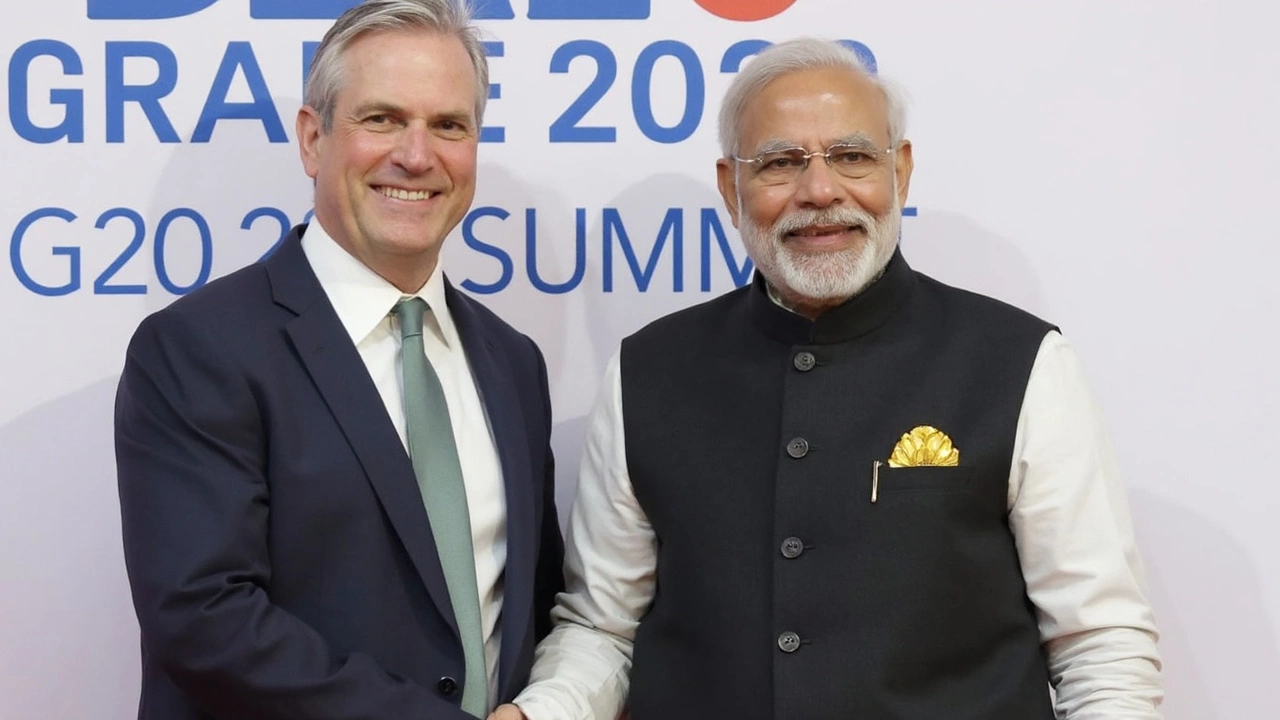
After Three Years, a Landmark Free Trade Agreement
Three years of back-and-forth, marathon meetings, and the odd late-night phone call finally led to a historic milestone on May 6, 2025. The India-UK Free Trade Agreement is not just another document with government seals—it’s a serious shakeup for both economies. It comes at a time when the world is fretting about rising tariffs and uncertain markets, yet India and the UK have inked a deal aimed at making trade cheaper, smoother, and, crucially, more promising for jobs and businesses.
Leaders on both sides see this as more than a paperwork victory. Both PM Narendra Modi and UK’s new Prime Minister Keir Starmer stressed how the deal doesn’t just smash barriers for goods, but puts real muscle behind their countries’ future growth. For India, this fits right into the government’s ‘Viksit Bharat 2047’ vision—a roadmap for becoming an advanced economy by the country’s 100th birthday.

Trade Flows, Jobs, and Sector Surges: What’s Actually Changing?
Start with the raw numbers: in 2024, trade between India and the UK touched £42.6 billion. Expect that to shoot upwards. The FTA isn’t just headline-grabbing; it’s packed with details that should make everyday business easier and products more affordable. For Indian exporters, especially those in textiles, the news is huge. About 99% of Indian exports—think garments, cotton, and handmade crafts—now face zero UK tariffs. This could really fire up India’s factory floors in areas where labor is cheap but opportunity has been hard to find.
The UK isn’t left out of the bargain either. For years, British producers have eyed India’s massive whisky and gin markets but run into, frankly, jaw-dropping duties. Now, those tariffs are being chopped in half, making British bottles more accessible to Indian consumers. The FTA doesn’t stop there—Indian professionals, think techies and financial experts, will have an easier pathway to work and live in the UK. This shift in people and skills is expected to feed directly into more innovation and business partnerships.
The deal also helps tackle the less glamorous but very real world of taxes. The Double Contribution Convention means companies that are operating in both countries won’t be tripped up by double taxation headaches. This is big for tech startups and mid-sized companies already eyeing the other market but worried about paperwork and unexpected costs.
It’s worth noting that this agreement wrapped up just as India is in talks with the US and EU for similar deals. Analysts point out that the UK’s speed in sealing the FTA may nudge those future negotiations in India’s favor. With global trade facing headwinds from rising US tariffs and election-driven uncertainties, the India-UK FTA is one of the few bright spots bucking the trends.
- India-UK Free Trade Agreement brings zero duties for nearly all Indian exports, making ‘Made in India’ goods more competitive in the UK.
- UK whisky and gin will be cheaper in India, giving British exporters a real shot in the arm.
- Indian professionals get new options to work in the UK, promising sharper cross-border talent flows.
- Double Contribution Convention slims down tax hassles, letting businesses keep more of their earnings.
Behind these changes were some tough and technical negotiations led by Commerce Minister Piyush Goyal, who worked closely with his UK counterpart Jonathan Reynolds. For the UK, this FTA stands out as a major post-Brexit global win, sending a message that it’s very much open for business with major partners like India. For India, the deal proves the country’s ambition and sets a new standard for deals with other big economies down the road.